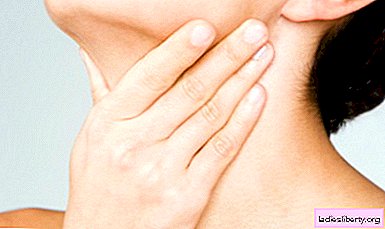
Tracheitis is a tracheal disease resulting from a viral or bacterial infection of the nasopharynx. The process is similar to bronchitis, differs only in localization and is often accompanied by bronchial disease. Tracheitis is characterized by pain in the chest, a painful cough, which is activated in the morning. If you do not carry out the appropriate treatment, then the cough continues for several weeks.
Tracheitis in young children is at risk of asphyxiation, especially when combined with diphtheria. Tracheitis occurs in a chronic or acute form. Acute tracheitis is usually accompanied by a concomitant disease - laryngitis, acute rhinitis or pharyngitis.
Tracheitis - causes
The most common causes of acute tracheitis are: a virus, streptococcal or staphylococcal infection. The cause of tracheitis may be the inhalation of cold, dry or dusty air, as well as air with a high concentration of aggressive substances.
Acute tracheitis in some cases can become chronic. Quite often, it occurs in people who abuse alcohol and smoking, as well as on the basis of diseases of the kidneys, heart, and emphysema. Inflammatory chronic diseases of the paranasal sinuses and nasal cavities are often the cause of tracheitis.
Tracheitis - Symptoms
Symptoms of acute tracheitis usually appear immediately after acute inflammation of the overlying airways. The most characteristic sign of tracheitis is a dry cough in the morning and at night. Coughing fits occur when crying, taking a deep breath, or laughing. During an attack of coughing, the patient feels an aching pain behind the sternum and in the throat, which leads to a restriction of respiratory movements. Breathing becomes rapid and shallow. Even a small amount of sputum located at the site of bifurcation of the trachea can cause an attack of convulsive cough.
The general condition of the patient is usually satisfactory. There is a slight increase in body temperature (significant in children - up to 39 degrees). Sputum is initially viscous, mucous and departs in a small amount. Gradually, it becomes more abundant, mucopurulent and easier to separate. Cough pain becomes less intense.
Sometimes the inflammatory process simultaneously with the trachea captures the bronchi, then the clinical picture takes the character of tracheobronchitis. Coughing becomes more painful, and body temperature rises. The most common complication of tracheobronchitis and tracheitis is bronchopneumonia, which is especially dangerous for the elderly and children.
Tracheitis - diagnosis
Diagnosis of tracheitis is based on a generalized clinical picture, the results of a medical examination of the larynx and trachea using a laryngoscope, listening to sounds (auscultation) using a phonendoscope. During the examination, edema, which is characteristic of acute tracheitis, is clearly visible. Listening traces various wheezing scattered throughout the lungs.
Tracheitis - treatment and prevention
The treatment of chronic and acute forms of the disease is the same. It depends on the causes of tracheitis. Since the nature of the disease is variable, the doctor needs to find out the factors that provoked the development of tracheitis.
With intoxication, sulfonamides and antibiotics are prescribed, with infection - various antiviral drugs. During treatment, special attention should be paid to the symptoms of tracheitis, which are manifested to a greater extent. So, a significant increase in temperature must be eliminated with antipyretic agents. Difficult sputum discharge requires the use of expectorant reflex action. It is recommended to carry out inhalation and take a hot drink.
Prevention of tracheitis includes measures designed to prevent the disease, and the possible elimination of conditions that provoke the development of the disease:
- avoid prolonged stay in poorly ventilated and dusty rooms;
- avoid overcooling;
- Avoid passive and active smoking;
- observe basic hygiene rules and cleanliness in the house.
Comments











